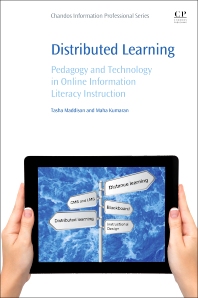Books in Library automation and networks
Books in Library automation and networks

Staff-Less Libraries
- 1st Edition
- Carl Gustav Johannsen
- English

Distributed Learning
- 1st Edition
- Tasha Maddison + 1 more
- English

Selecting and Implementing an Integrated Library System
- 1st Edition
- Richard M Jost
- English

Academic Search Engines
- 1st Edition
- Jose Luis Ortega
- English

Creating and Maintaining an Information Literacy Instruction Program in the Twenty-First Century
- 1st Edition
- Nancy Noe
- English

The Metadata Manual
- 1st Edition
- Rebecca Lubas + 2 more
- English

Information Services and Digital Literacy
- 1st Edition
- Isto Huvila
- English

The Academic Research Library in A Decade of Change
- 1st Edition
- Reg Carr
- English

Computers for Librarians
- 3rd Edition
- Stuart J. Ferguson + 1 more
- English